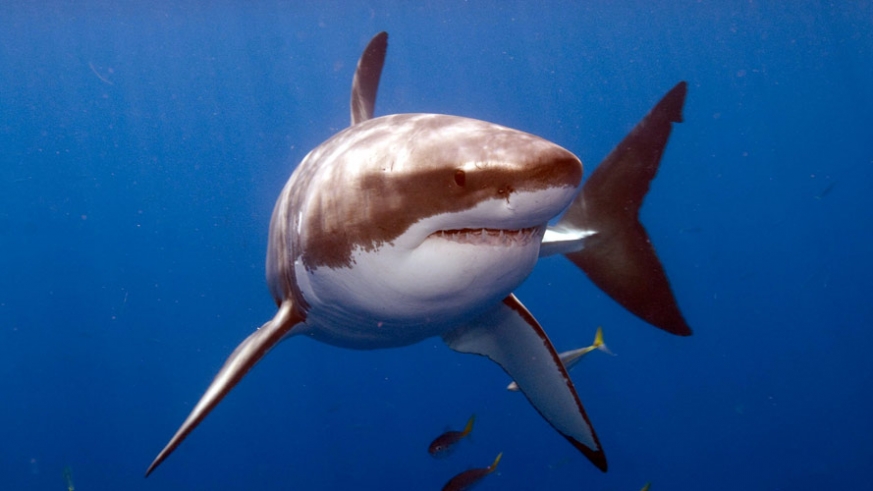The Natural Protected Area (NPA), Isla Guadalupe Biosphere Reserve in Baja California, is the only concentration site of white sharks (Carcharodon carcharias) in Mexico and one of the best places in the world for watching these incredible animals. To date there is an approximate arrival record of 274 specimens.
According to the National Commission of Protected Natural Areas (CONANP) and the researcher Mauricio Hoyos, this NPA has important characteristics of water visibility and number of animals that can be seen in a day (up to 33), and its remoteness and isolation make it a perfect place to host the only population of white sharks off the coast.
During the presentation of the book “The Great White Shark, Protector of the Oceans”, edited by the WWF Alliance and TELMEX TELCEL Foundation, Dr. Mauricio Hoyos — author of the book — emphasized that his research is based on the photo identification and placement of acoustic and satellite tags to the squalids that arrive to this island, with the purpose of obtaining data that allow to learn more about the trajectory and habits of the species.
“For 14 years, the Mexican scientist has studied the white shark on Isla Guadalupe, surrounded by crystalline waters: initially as a modern Robinson Crusoe living isolated for months on this volcanic island, located 335 km (210 miles) from Ensenada, Baja California, and it can only be reached by boat after one day of navigation,” said the writer Ángeles Mastretta, who officially presented the book at the Soumaya Museum of Plaza Carso, in Mexico City.
“This is the first book written in Latin America that covers everything about the white shark, a species that has evolved for 11 million years to become king of the seas, because of its anatomical characteristics and its six senses: taste, hearing, sight, smell, lateral sensory line and electroreception, which allow this animal to orientate itself, navigate and detect prey,” said Marcos Linares, Deputy Director of Corporate Marketing at Telcel.
Jorge Rickards, Acting Director General of the World Wide Fund for Nature (WWF) in Mexico, noted that in 2000 Guadalupe Island is discovered as one of the white shark meeting places; and that’s when sustainable tourism activites started with the purpose of observing this magnificent animal, and also to position this Protected Natural Area on the map.
The National Commissioner, Alejandro Del Mazo Maza, stressed that the Commission is committed to protect this emblematic species, whose numbers increased by 30 percent, and this is why training workshops are provided to tourism service providers periodically and a “Handbook of Best Practices” was delivered to them.
He commented that this year a new observation cage was designed, in order to guarantee the safety of the species and the visitors.
He thanked Dr. Mauricio Hoyos for the great research on the behavior of the white shark, the TELMEX-TELCEL foundation, the guards of CONANP and all those involved in the conservation of the Guadalupe Island Biosphere Reserve.
With the backing of the WWF Alliance – TELMEX TELCEL Foundation, Dr. Hoyos Padilla and his team are the first Mexican expert group on shark telemetry. They photoidentify and mark each season the sharks that come to Isla Guadalupe, this has allowed them to detect the arrival of at least 274 white sharks in 2016, of which 45 are individuals who have returned to this place.
The permanent research work in the area identified in 2013 Deep Blue, a female more than six meters in length and the largest white shark in the world that has been filmed.
As a result of Hoyos’ research, white sharks are known to hunt northern elephant seals at depths of 200 meters, something that American scientists considered impossible, because the species attacks from the surface up to 20 meters deep. This investigation also revealed that young sharks stay up to 14 months on the island.
Finally the biologist stressed that, contrary to popular belief, humans are not part of the diet of sharks because they do not have enough fat.
Source: www.wwf.org.mx y www.panda.org




